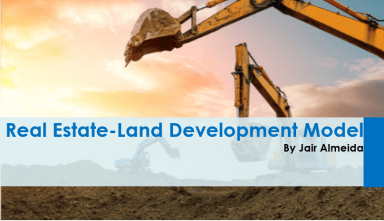
Last version published: 01/03/2024 08:25
Publication number: ELQ-62496-6
View all versions & Certificate

Real Estate - Land Development Model
Real-estate Financial Model for quickly calculating the potential returns and/or estimating the land development project
Further information
Evaluate the feasibility of a land development project (purchase of land, land development and sell of lots) from an investment/investors point of view taking into account various parameters such as operational, leverage capital expenditures, equity structure, average sell price etc
Does not work well for non-real estate businesses.
















